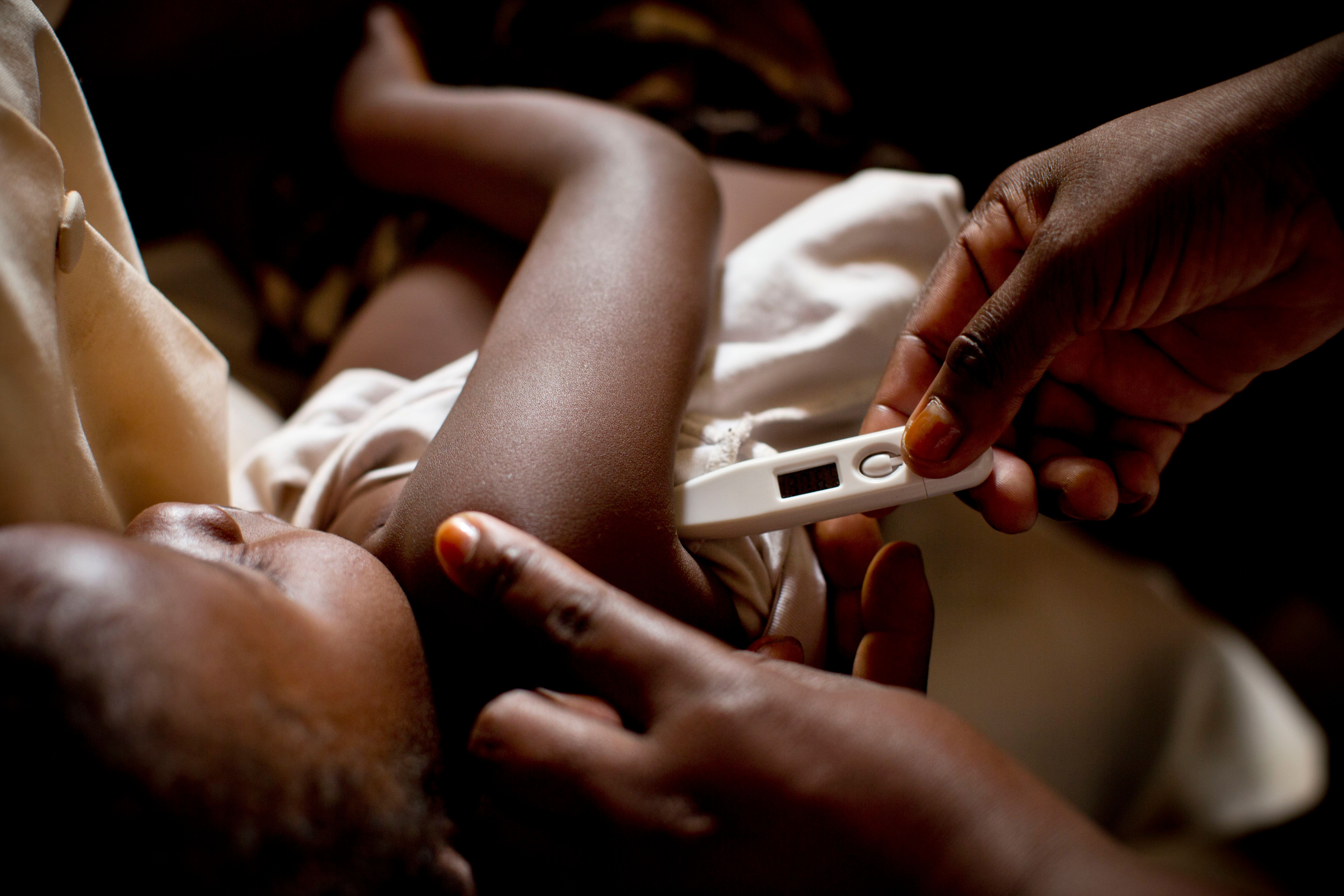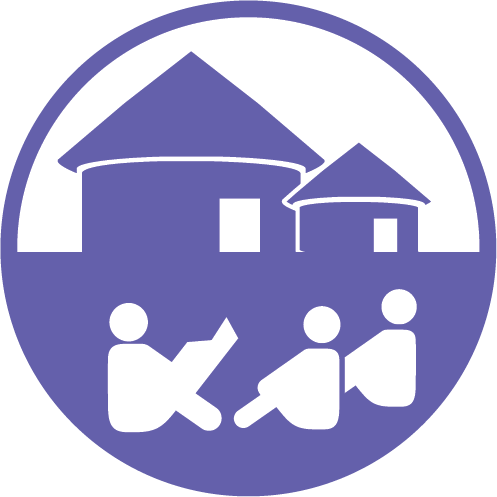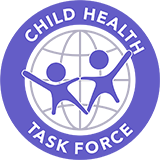
Photo: Kate Holt/MCSP
GREETINGS from the TASK FORCE SECRETARIAT
Dear Friends,
While we welcome the reduction in the number of new COVID-19 cases in many places, the threat is not over and I trust that you are staying safe and healthy.
Below, we highlight for you the effects of the COVID-19 pandemic on the health of children and some resources available for response efforts. In addition, we share news and resources on broader child health themes, including the USAID report on three country perspectives on child health leadership; the Lancet Commission report: A Future for Our World's Children; the final phase of the re-imagining technical assistance work; and a report on the subgroups.
We look forward to seeing on the various webinars we continue to host.
Sincerely,
Dyness Kasungami, Director of the Child Health Task Force
UNDERSTANDING CHILD HEALTH IN THE CONTEXT OF COVID-19

Photo: Centers for Disease Control and Prevention
Spreading rapidly since January 2020 and officially declared a pandemic by the WHO on March 11th, COVID-19 has changed the world and the public health landscape. How long the pandemic will last and its full impact are still unknown. The biggest threat to children is not illness from COVID-19, but the disruption of essential, preventive, and curative services and the socio-economic impact of the prolonged pandemic. During this time, the Child Health Task Force will continue to serve as a platform for collaboration among child health stakeholders to gather and disseminate information and resources to mitigate these negative impacts.
The Task Force website now includes a new resource page focused on understanding child health in the context of COVID-19. Acknowledging that much of the published data and focus of the pandemic - particularly at the beginning - has been on adult patients, the aim of this resource page is to provide our members and other child health stakeholders access to up-to-date research, guidelines, and information on how countries are responding.
Additionally, the Task Force Secretariat is working with subgroup co-chairs on a bi-weekly webinar series on child health and the COVID-19 response. Each webinar is hosted by a subgroup and focuses on how they are responding to the pandemic in their thematic area at the global and country level, as well as the challenges they are facing in continuing essential health services.
Recordings of past webinars in the series can be found on the COVID-19 resource page here.
CHILD HEALTH LEADERSHIP: USAID'S COUNTRY PERSPECTIVES STUDY
USAID's CIRCLE project recently published the Child Health Leadership and Networks from 2000 to the Present: Country perspectives from Mozambique, Tanzania, and Uganda study which follows the 2016 global-level study, Mapping Global Leadership in Child Health.
The new Country Perspectives study aimed to complement the global findings with country voices and explore how leadership, organization networks, and political commitment affect progress in child health; what are the enablers of national progress; and how these and other factors of change may advance child health in Mozambique, Tanzania, and Uganda. The study culminated in three country case studies and a cross-country report that provides an overview and compares and contrasts the three case studies.
We spoke to the Study Team Leader, Mary E. Taylor, who provided additional insight to the new study. Below is our Q&A with her responses summarized and edited for length.
Q: How does the Child Health Country Perspectives Study build off of the 2016 study, Mapping Global Leadership in Child Health?
The Mapping Global Leadership study had a strong finding that country leadership and action was essential to make a difference, so it was important to hear from the country-level on how child leadership has evolved and how they see child health as an issue now. When the first study was conducted in 2016, there was a lot more uncertainty around the SDGs and UHC. Given that there has been a shift since that time, particularly with the SDGs and making them more specific and measurable, in the Country Perspectives study we were able to talk to people within that context, where things are beginning to shift in terms of overall long-term goals and a vision for child health. It was also really about talking to people who are doing the work.
Q: Were there any findings that were unexpected?
Among the three countries, unsurprisingly, we found that country leadership needs to be in the driver's seat and the global level needs to support that. What was surprising was that while we may be talking about concepts like SDGs and UHC that are driving the child health thinking on the global level, at the country level, it does not appear to be internalized as deeply to be an overarching vision. Among the individuals interviewed, those concepts do not seem to be driving the decision-making for the future. The strategies and mandates have not yet fully meshed with the thinking and processes at a country level, although there is some movement (e.g., Uganda is beginning a consultation cascading process around the SDGs).
Additionally, it is really not just about collaboration at the national level, though it needs to be there as they set standards and have influence downward. But if you don't have the same kind of level collaboration at the local level (district or facility or network of facilities), then you don't change how services are delivered or how priorities are made or how resources are moved around. The local level has always been important, but it's even more important when talking about addressing inequity where you need flexible, local solutions to improve child health collaboratively with communities, given their own particular needs and situation - that observation came from the interviews.
Also child health, more or less in all three countries, equated to newborn health. Looking at mortality data, it is necessary to focus on newborns to reduce overall mortality; however, the attention to other areas waned (unfinished agenda of pneumonia, malaria, diarrhea, etc.). Given the shift to the SDGs along with adding adolescence to child health, these changes contribute to a working tension on needing to focus on priorities, while also keeping the whole picture in mind and how to do that effectively. When resources are limited and people are busy, people tend to tackle issues piece by piece, but that's not how a system works. The consequences of that at the local level are more concrete than at the global level.
Q: How do you hope this study will contribute to improving child health?
It is important that countries have their own vision that leads their work, which is owned and implemented by them. I hope this study will contribute to that process and encourage the global level to support country ownership. It's important what the operational people think and do and how it connects with their every day work. By illuminating that, it would give some space and cause for people to think about how they are helping and working with countries to build that vision. All this can't be driven from global level - it needs to be done from the ground up if it's to be sustained.
WEBINAR ON THE WHO-UNICEF-LANCET COMMISSION: A FUTURE FOR OUR WORLD'S CHILDREN
A Lancet Commission was formed in 2018 to consider the ways governments, medical professionals, and society at large can accelerate child health progress in the context of the Sustainable Development Goals (SDGs). On February 18, 2020 the Commission's report, A future for our world's children? was published. The report lays out actionable agendas under five main themes and provides 10 key recommendations to build a new global movement for the health and well-being of children and adolescents.
5 THEMES
- Placing child wellbeing at the center of the SDGs
- Entitlements and equity-focused investments for children and their benefits
- Global, national, and subnational governance frameworks for multi-sectoral solutions
- Regulation of the commercial market for child protection
- The role of data and actions needed to track SDG progress for children
Recognizing the great importance of these recommendations to child health stakeholders, the Task Force Secretariat held a webinar on May 28th for members and other child health stakeholders to discuss and understand the report and its implications. The webinar focused on three themes of immediate relevance to child health program implementers and included presentations by some of the commissioners, as well as a moderated discussion addressing the funding options and perspectives of professional associations/pediatricians, NGOs, and other partners. The presenters and panelists also provided some new perspectives on the report within the COVID-19 context.
Based on discussions during the webinar, there is a need for continued advocacy for comprehensive multi-sectoral approaches to child health in order to meet the survive, thrive, and transform SDG targets. In follow-up, the Secretariat is looking into future targeted discussions on specific themes or sub-actions of the report, including a discussion organized and led by a country.
A recording of the webinar and the presentations can be found on the Task Force website here.
RE-IMAGINING TA PROJECT UPDATE
We are pleased to announce that we have completed project work in both countries and you can find all of the TA design principles, reports, and products on our website, under each country page.
JOIN THE TASK FORCE'S LINKEDIN PAGE
 If you have not joined yet, please consider joining the Task Force's LinkedIn group . We hope that by joining the LinkedIn group, you can show your affiliation with our global network and utilize it to share any current job announcements that you would normally request the Secretariat to send out.
If you have not joined yet, please consider joining the Task Force's LinkedIn group . We hope that by joining the LinkedIn group, you can show your affiliation with our global network and utilize it to share any current job announcements that you would normally request the Secretariat to send out.
SUBGROUP UPDATES
![]()
Digital Health and Innovations: The DH&I subgroup led the fourth webinar in the Child Health & COVID-19 series on June 12th, in collaboration with the CORE Group. The co-hosted webinar focused on how to ensure an optimal level of quality of care during the COVID-19 response by incorporating short and long-term digital health solutions and discussed how partners are mitigating the effects of service disruption using digital health. A recording of the webinar can be found here (password: 6Y!6w820).
![]()
Expansion of the Child Health Package: The new co-chairs, Cara Endyke-Doran (MSH) and Raoul Bermejo (UNICEF), have been working to refocus the subgroup's work for 2020-2022. Interested members should join the first webinar scheduled for July 8th at 9:00am EDT which will include a review and discussion of the subgroup's updated TOR and a presentation of the Task Force-commissioned position paper, Synthesis of Findings on Integrated Packages for Child Health Services. You can register for the meeting here.

Implementation Science: The iSci subgroup kicked off the Child Health & COVID-19 webinar series on April 23rd. As the first webinar, it focused on the current knowledge and status of the pandemic globally and country experiences in Bangladesh and Pakistan. A recording of the webinar can be found here (password: 9Y&1?%y^).

Institutionalizing iCCM: The Institutionalizing iCCM subgroup has revived its partnership with the UNICEF-led iCCM Task Team in addition to collaborating with MOMENTUM 2A to support non-malaria commodities. The support is provided through consultants and by countries to: conduct gap analyses of resources needed for iCCM scale-up; include iCCM in the GF applications; develop mini investment cases for iCCM scale-up; and, use the mini-investment cases to advocate for domestic/other sources of funding for providing feedback to strengthen the draft concept notes before submission to the GF.

Private Sector Engagement: The PSE subgroup led the third webinar in the Child Health & COVID-19 series on May 21st which focused on partner collaboration in the response. The webinar included a presentation on the WHO Private Sector Action Plan and preliminary findings on the challenges that countries are facing in engaging the private sector in their COVID-19 response efforts. The experience in Tanzania and the importance of the action plan was highlighted. There was also a presentation by the Kenya MOH on their collaboration with the Kenya Pediatric Association to adapt guidelines for case management and the overall response efforts. A recording of the webinar can be found here (password: 1G.P#qg@).
![]()
Quality of Care: The QoC Subgroup has partnered with the Network for Improving Quality of Care for Maternal, Newborn and Child Health to co-host a bi-weekly webinar series, Delivering Quality Essential MNCH Services During COVID-19. The first webinar in the series was held June 11th on infection prevention and control for safe delivery of quality of care sharing global guidance and country experiences. You can find more information on the webinar series, including a tentative list of topics and dates, here.

NEWS FROM THE NETWORK
-
Brief: Improving Child Health through a Life-Course Perspective
The first in JSI's series on child health, Beyond Survival, the brief, authored by Michel Pacqué, discusses the need to improve child health through a life-course approach. The approach acknowledges that events occurring in early life greatly influences later health outcomes as well as environmental and socio-economic factors, particularly geographic location, poverty, and ethnicity, rendering health equity as integral to our work. More briefs, exploring different themes, will be added to the Beyond Survival series. -
Blog: Supporting Retail Medicine Vendors as Resources for Child Health
JSI discusses the results from working with the Government of Nigera and other partners to improve the quality of care provided by patent proprietary medicine vendors in Ebonyi and Kogi States, where access to high-quality health services for children is extremely limited. - Infographic: Advocating for Increased Resources for Child Health
The Global Financing Facility's (GFF) approach is tailored to country context and builds off of existing RMNCAH+N plans to strengthen country systems and avoid duplicating efforts. This guidance, created by the Task Force, outlines how child health stakeholders can effectively engage with the GFF for women, children, and adolescents at a national level through an investment case.
If you have announcements, resources, or other information to share, please email: childhealthtaskforce@jsi.com to be included in the next newsletter.

UPCOMING EVENTS
- July 1-2, 2020, online | Lives in the Balance: A COVID-19 Summit for the Health and Well-Being of Women, Children, and Adolescents.
The Partnership for Maternal, Newborn & Child Health (PMNCH) and CORE Group are co-hosting a summit to reflect, share best practices, and collaborate around advancing the well-being of women, children, and adolescents during a pandemic. Implementers, UN agencies, academics, donors, private sector, youth, civil society, community health advocates and more are invited to participate in this virtual event.
